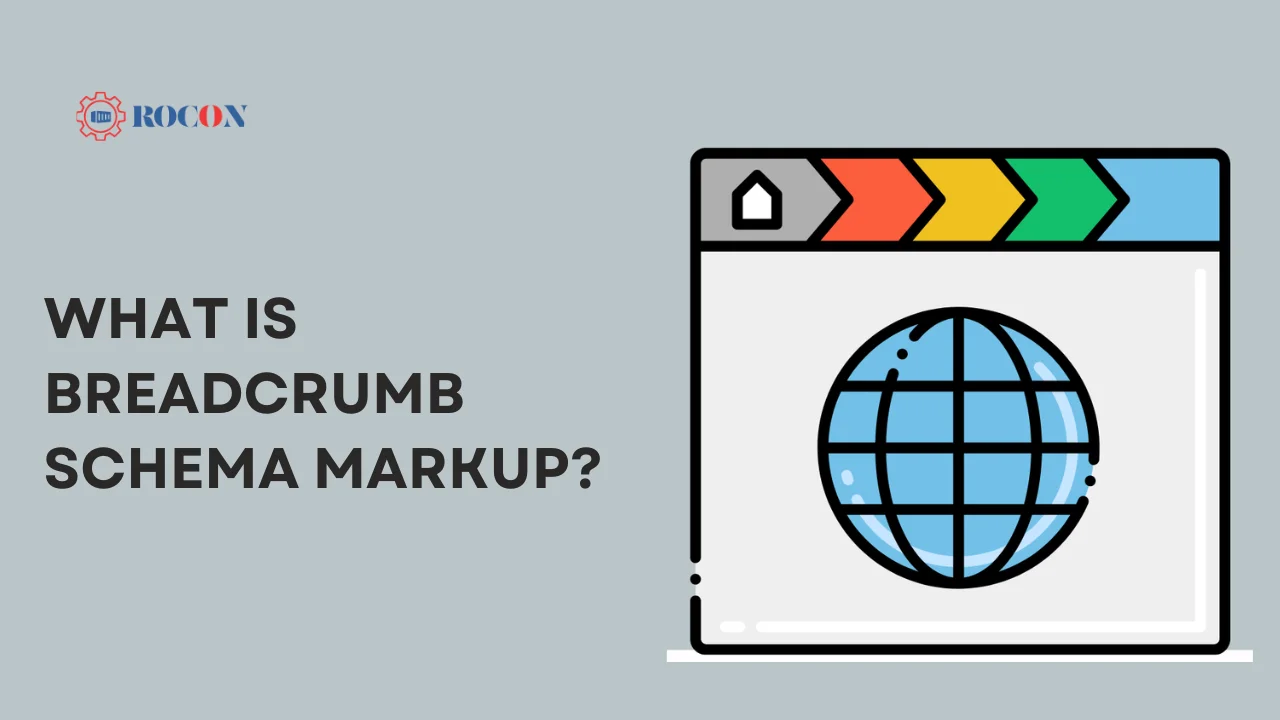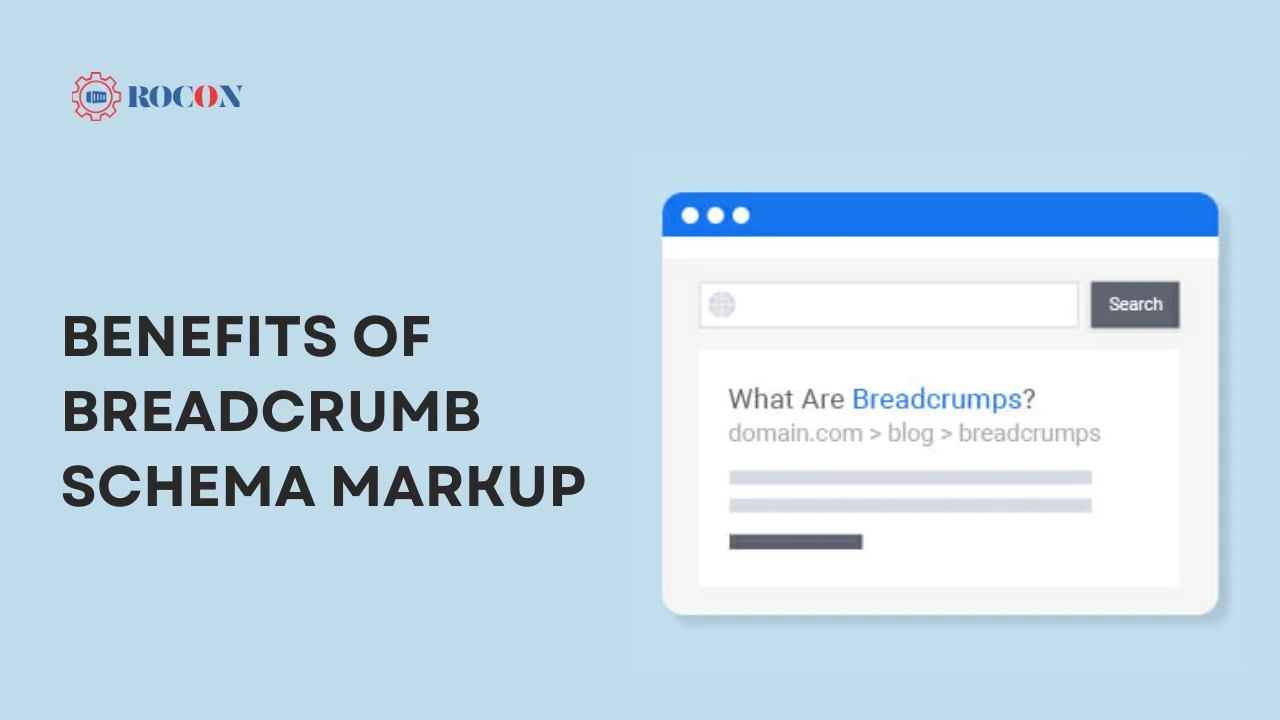Introduction: Breadcrumb Schema Markup
Ever noticed the small navigation trail on websites like Home > Blog > SEO Tips? That’s called a breadcrumb, and it’s more than just a visual guide—it’s a powerful SEO asset. Breadcrumb Schema Markup helps search engines like Google understand your site’s structure and display breadcrumb paths directly in search results.
By adding breadcrumb structured data, you improve both user experience and search visibility. It tells Google how pages are related, which helps boost your click-through rate (CTR) and strengthens your site’s topical authority. Whether you’re using WordPress, Rank Math, or Yoast SEO, implementing breadcrumb schema markup ensures your site hierarchy is clean, crawlable, and optimized for rich results.
In this guide, we’ll explain how breadcrumb schema works, how to add it in WordPress (manually or via plugins), and why it’s essential for improving SEO and navigation on modern websites.
What is Breadcrumb Schema Markup?

Breadcrumbs are navigational aids that help users understand where they are within a website. Typically found at the top of a webpage, breadcrumbs show the path from the homepage to the current page and are displayed as a series of clickable links separated by arrows or symbols.
For example:
Home > Blog > SEO > What is Breadcrumb Schema Markup?
Breadcrumb Schema Markup is a type of structured data added to your website’s HTML code that helps search engines understand and display breadcrumbs directly in search results. By using schema markup for breadcrumbs, you’re essentially labeling the breadcrumb trail so that search engines can interpret it more accurately and use it to display an organized trail in search engine results pages (SERPs).
Why Breadcrumb Schema Markup is Important
Breadcrumb schema markup provides several benefits for both users and search engines:
- Enhanced User Experience: Breadcrumbs help users understand the structure of the website, allowing them to navigate back to previous sections quickly and easily.
- Improved Click-Through Rates (CTR): Breadcrumbs in search results provide additional context about a page’s location within the site, making it more appealing to users and potentially increasing the click-through rate.
- Better Site Structure for SEO: Breadcrumbs convey a logical structure to search engines, which helps with organizing your site’s hierarchy and improves its crawlability.
- Reduced Bounce Rates: Breadcrumbs offer easy navigation options, encouraging users to explore more of the site rather than leaving after viewing just one page.
Types of Breadcrumbs
There are three main types of breadcrumbs, each serving a unique purpose based on the website’s structure and the type of content presented.
Hierarchy-Based Breadcrumbs
- Purpose: Show the website’s hierarchical structure.
- Best for: Websites with a multi-level structure, such as eCommerce sites, blogs, and content-heavy sites.
- Example: Home > Category > Subcategory > Product Page
Description: This type of breadcrumb is the most commonly used and reflects the hierarchical structure of the website. It shows the relationship between the homepage and the current page, providing a clear path that users can follow to navigate back.
Attribute-Based Breadcrumbs
- Purpose: Show the attributes or characteristics of a specific product.
- Best for: eCommerce sites where users select product attributes, such as size or color.
- Example: Home > Clothing > Men > T-Shirts > Size Large
Description: Attribute-based breadcrumbs are used to display specific characteristics of a product or item. They are common in eCommerce sites, where users may filter or select specific product attributes, such as color or size. This type of breadcrumb is particularly helpful for users browsing through different product variations.
Path-Based Breadcrumbs
- Purpose: Show the path a user took to arrive at the current page.
- Best for: Less commonly used, as they depend on user behavior rather than the site structure.
- Example: Home > Previous Page > Current Page
Description: Path-based breadcrumbs display the exact path the user has taken to reach the current page. While this can be useful for some applications, it’s less stable and predictable for SEO purposes, as it changes based on user navigation rather than a fixed site structure.
Hierarchy-based breadcrumbs are the most widely used and effective for SEO purposes, as they clearly convey the structure of your site to both users and search engines.
How Breadcrumb Schema Markup Works
Breadcrumb schema markup utilizes structured data, a standardized format used to classify website content and relationships. Schema.org, a collaborative initiative by Google, Bing, Yahoo!, and Yandex, provides a vocabulary of structured data that helps search engines interpret and classify information on a page.
By adding breadcrumb schema markup to your HTML, you provide search engines with explicit information about the page’s position within the site hierarchy. This allows search engines to display breadcrumbs directly in SERPs, making your result more organized and user-friendly.
JSON-LD: Google’s Preferred Format
The most common and preferred format for implementing structured data is JSON-LD (JavaScript Object Notation for Linked Data). This format is recommended by Google and is relatively simple to add to your website’s HTML. JSON-LD allows you to insert structured data within a <script> tag in the page’s <head>, without affecting the page’s layout or design.
Benefits of Breadcrumb Schema Markup

Improved Click-Through Rates (CTR)
Breadcrumbs add visual structure to search engine results, providing users with a clear sense of the page’s context. When users see breadcrumb trails in SERPs, they’re more likely to click on your listing as it provides reassurance of the page’s relevance to their query.
Enhanced Visibility in Search Results
Adding breadcrumb schema markup can enhance your search result snippets by displaying breadcrumb trails, which helps your listing stand out among others. This additional navigation information not only enhances visibility but also makes it more likely that users will click on your site rather than a competitor’s.
Improved User Experience and Navigation
Breadcrumbs offer users a sense of orientation within your site. They provide a straightforward way for users to explore previous sections, which is especially beneficial on sites with complex category structures. This streamlined navigation can lead to lower bounce rates and higher on-site engagement.
Better Site Structure for SEO
Breadcrumb schema markup reinforces your site’s hierarchy, making it easier for search engines to understand and index content in the appropriate context. This helps search engines understand the relationships between pages, potentially improving your ranking for relevant keywords.
How to Implement Breadcrumb Schema Markup
Implementing breadcrumb schema markup involves adding structured data in JSON-LD format to each page where breadcrumbs are present. Here’s a step-by-step guide.
Step 1: Plan Your Breadcrumb Structure
Decide on the structure of your breadcrumbs. For most websites, hierarchy-based breadcrumbs are the best option, as they provide a consistent trail that aligns with the site’s architecture.
Step 2: Add Breadcrumb Schema Markup in JSON-LD Format
Here’s an example of how to implement breadcrumb schema markup on a product page:
json
<script type=”application/ld+json”>
{
“@context”: “https://schema.org”,
“@type”: “BreadcrumbList”,
“itemListElement”: [
{
“@type”: “ListItem”,
“position”: 1,
“name”: “Home”,
“item”: “https://example.com”
},
{
“@type”: “ListItem”,
“position”: 2,
“name”: “Category”,
“item”: “https://example.com/category”
},
{
“@type”: “ListItem”,
“position”: 3,
“name”: “Subcategory”,
“item”: “https://example.com/category/subcategory”
},
{
“@type”: “ListItem”,
“position”: 4,
“name”: “Product”,
“item”: “https://example.com/category/subcategory/product”
}
]
}
</script>
- @type: Identifies the schema type. For breadcrumbs, use “BreadcrumbList.”
- itemListElement: Each item in the breadcrumb trail.
- position: Specifies the sequence of each item.
- name: The label displayed for each breadcrumb.
- item: The URL for each breadcrumb link.
Step 3: Test Your Markup
Use Google’s Rich Results Test to verify that your breadcrumb schema is implemented correctly.
- Paste your URL or HTML code into the Rich Results Test.
- Run the test to see if any errors appear.
- Resolve any errors or warnings for best results.
Step 4: Monitor in Google Search Console
Google Search Console provides insights into how Google processes your structured data. Check the Enhancement Section to monitor your breadcrumb schema for any errors or improvements.
Experience Blazing Fast WordPress Hosting with Rocon
Beyond Breadcrumb Schema Markup, website speed is crucial for boosting your SEO and enhancing user experience. With Rocon’s WordPress hosting, you get fast hosting experience. Elevate your website’s performance with unmatched hosting today!
Explore More
Common Pitfalls and How to Avoid Them
While breadcrumb schema is relatively straightforward, there are some common issues to watch out for:
- Incorrect Position Values: Ensure each breadcrumb has a unique position in the trail to avoid errors.
- Broken Links: Verify each breadcrumb link is valid and accessible.
- Inconsistent Structure: Ensure your breadcrumbs match the site’s hierarchy.
Best Practices for Using Breadcrumb Schema
- Keep Breadcrumbs Consistent: Uniform breadcrumb trails improve user experience and reduce confusion.
- Limit Depth: Avoid excessively deep breadcrumb trails, as they may overwhelm users.
- Use Clear Names: Label each breadcrumb clearly to improve user comprehension.
- Avoid Path-Based Breadcrumbs: Stick to hierarchy-based breadcrumbs for a stable, SEO-friendly structure.
In short: The SEO and UX Benefits of Breadcrumb Schema
Breadcrumb schema markup is a valuable tool for any website that aspires to enhance its user experience and search engine optimization. By incorporating a breadcrumb schema, you are simultaneously facilitating the navigation of your site and enhancing the comprehension of your site structure by search engines.
Breadcrumb schema is an essential feature for site owners, developers, and SEO professionals, as it enhances visibility in search results, strengthens site architecture, and ultimately contributes to a more engaging user experience. Begin implementing breadcrumb schema today to enhance the efficacy of your website in search engines and provide a more organized, transparent structure.
Breadcrumb Schema Markup FAQs
1. How to check breadcrumb schema?
You can check breadcrumb schema using Google’s Rich Results Test or Schema Markup Validator. Just enter your page URL and run the test to see if breadcrumb structured data is detected. Many SEO plugins like Yoast SEO or Rank Math automatically add breadcrumb schema for better search visibility.
2. Is breadcrumb good for SEO?
Yes, breadcrumbs are excellent for SEO. They help search engines understand your site’s structure and improve internal linking. Breadcrumbs also enhance user experience by showing clear navigation paths. Google often displays breadcrumb trails in search results, which improves click-through rates (CTR) and overall site ranking.
3. What is the purpose of a breadcrumb?
The main purpose of a breadcrumb is to help users navigate easily through your website’s hierarchy. It shows where a page sits within the site structure—like Home > Blog > SEO Tips. Breadcrumbs enhance usability, reduce bounce rates, and help search engines better understand your site’s content organization.
4. What is breadcrumbing in marketing?
In marketing, breadcrumbing refers to leaving small pieces of content or hints that guide potential customers toward a conversion. Unlike website breadcrumbs, this is a psychological strategy to maintain engagement—often used in email sequences, ads, or retargeting campaigns to nurture leads gradually.

Leave a Reply